- Home
- Isaac Asimov
Daneel Olivaw 2 - The Naked Sun
Daneel Olivaw 2 - The Naked Sun Read online
DEAD ENDS
“I suppose the murderer is completely unknown,” Baley said.
Gruer looked particularly uneasy. “No, I cannot say the murderer is completely unknown. In fact, there is only one person that can possibly have done the deed.”
“Are you sure you don’t mean only one person who is likely to have done the deed?”
Gruer shook his bald head. “No. Only one possible person. Anyone else is impossible. Completely impossible.”
“Completely?”
“I assure you.”
“Then you have no problem,” Baley concluded.
“On the contrary. We do have a problem. That one person couldn’t have done it either.”
Also by Isaac Asimov
available from Bantam Books
The Foundation Novels
PRELUDE TO FOUNDATION
FOUNDATION
FOUNDATION AND EMPIRE
SECOND FOUNDATION
FOUNDATION’S EDGE
FORWARD THE FOUNDATION
The Robot Novels
I, ROBOT
THE CAVES OF STEEL
THE NAKED SUN
THE ROBOTS OF DAWN
NEMESIS
THE GODS THEMSELVES
FANTASTIC VOYAGE
I, ASIMOV
WITH ROBERT SILVERBERG
NIGHTFALL
All characters in this book are fictitious and any resemblance to actual persons, living or dead, is entirely coincidental.
This edition contains the complete text of the original hardcover edition.
NOT ONE WORD HAS BEEN OMITTED.
THE NAKED SUN
A Bantam Spectra Book / published by arrangement with Doubleday
SPECTRA and the portrayal of a boxed “s” are trademarks of Bantam Books, a division of Random House, Inc.
All rights reserved.
Copyright © 1957 by Isaac Asimov © 1956 by Street & Smith
Publications, Inc.
Introduction copyright © 1983 by Nightfall Inc.
No part of this book may be reproduced or transmitted in any form or by any means, electronic or mechanical, including photocopying, recording, or by any information storage and retrieval system, without permission in writing from the publisher.
eISBN: 978-0-307-79240-2
Bantam Books are published by Bantam Books, a division of Random House, Inc. Its trademark, consisting of the words “Bantam Books” and the portrayal of a rooster, is Registered in U.S. Patent and Trademark Office and in other countries. Marca Registrada. Random House, Inc., New York, New York.
v3.1
To Noreen and Nick Falasca, for inviting me,
To Tony Boucher, for introducing me, and
To One Hundred Unusual Hours
CONTENTS
Cover
Other Books by This Author
Title Page
Copyright
Dedication
INTRODUCTION
1. A QUESTION IS ASKED
2. A FRIEND IS ENCOUNTERED
3. A VICTIM IS NAMED
4. A WOMAN IS VIEWED
5. A CRIME IS DISCUSSED
6. A THEORY IS REFUTED
7. A DOCTOR IS PRODDED
8. A SPACER IS DEFIED
9. A ROBOT IS STYMIED
10. A CULTURE IS TRACED
11. A FARM IS INSPECTED
12. A TARGET IS MISSED
13. A ROBOTICIST IS CONFRONTED
14. A MOTIVE IS REVEALED
15. A PORTRAIT IS COLORED
16. A SOLUTION IS OFFERED
17. A MEETING IS HELD
18. A QUESTION IS ANSWERED
About the Author
THE STORY BEHIND THE
ROBOT NOVELS
BY ISAAC ASIMOV
The writing side of my love affair with robots began on May 10, 1939, but as a science-fiction reader it began earlier still.
Robots were, after all, nothing new in science fiction, not even in 1939. Mechanical human beings are to be found in ancient and medieval myths and legends, and the word “robot” originally appeared in Karl Capek’s play R.U.R., which was first staged in 1921 in Czechoslovakia, but was soon translated into many languages.
R.U.R. stands for “Rossum’s Universal Robots.” Rossum, an English industrialist, produced artificial human beings designed to do the labor of the world and to free humanity for a life of creative leisure. (The word “robot” is from a Czech word meaning “compulsory labor.”) Though Rossum meant well, it didn’t work out as he planned: the robots rebelled, and the human species was destroyed.
It is perhaps not surprising that a technological advance, imagined in 1921, was seen as resulting in universal disaster. Remember that World War I, with its tanks, airplanes, and poison gas, had just ended and had showed people “the dark side of the force,” to use Star Wars terminology.
R.U.R. added its somber view to that of the even more famous Frankenstein, in which the creation of another kind of artificial human being also ended in disaster, though on a more limited scale. Following these examples, it became very common, in the 1920s and 1930s, to picture robots as dangerous devices that invariably destroyed their creators. The moral was pointed out over and over again that “there are some things Man was not meant to know.”
Even as a youngster, though, I could not bring myself to believe that if knowledge presented danger, the solution was ignorance. To me, it always seemed that the solution had to be wisdom. You did not refuse to look at danger, rather you learned how to handle it safely.
After all, this has been the human challenge since a certain group of primates became human in the first place. Any technological advance can be dangerous. Fire was dangerous from the start, and so (even more so) was speech—and both are still dangerous to this day—but human beings would not be human without them.
At any rate, without quite knowing what dissatisfied me about the robot stories I read, I waited for something better, and I found it in the December 1938 issue of Astounding Science Fiction. That issue contained “Helen O’Loy” by Lester del Rey, a story in which a robot was portrayed sympathetically. It was, I believe, only his second story, but I was a del Rey fan forever after. (Please don’t anybody tell him this. He must never know.)
At almost the same time, in the January 1939 issue of Amazing Stories, Eando Binder portrayed a sympathetic robot in I, Robot. This was much the poorer story of the two, but again I vibrated. Dimly, I began to feel that I wanted to write a story in which a robot would be portrayed lovingly. And on May 10, 1939, I began such a story. The job took me two weeks, for in those days it took me quite a while to write a story.
I called it “Robbie,” and it was about a robot nursemaid, who was loved by the child it cared for and feared by the child’s mother. Fred Pohl (who was also nineteen at the time, and who has matched me year for year ever since) was wiser than I, however. When he read it, he said that John Campbell, the all-powerful editor of Astounding, would not take it because it was too much like “Helen O’Loy.” He was right. Campbell rejected it for that very reason.
However, Fred became editor of a pair of new magazines soon after, and he took “Robbie” on March 25, 1940. It appeared in the September 1940 issue of Super-Science Stories, though its name was changed to “Strange Playfellow.” (Fred had an awful habit of changing titles, almost always for the worse. The story has appeared many times since, but always under my own original title.)
I was, in those days, dissatisfied with any sale not made to Campbell, however, and so I tried another robot story after a while. I discussed the idea with Campbell first, though, to make sure he wouldn’t reject it for anything other than inadequate writing, and then I
wrote “Reason,” in which a robot got religion, so to speak.
Campbell bought it on November 22, 1940, and it appeared in the April 1941 issue of his magazine. It was my third sale to him and the first one he had taken as it stood, without requesting revision. I was so elated by this that I quickly wrote a third robot story, about a mind-reading robot, which I called “Liar!”, and this one Campbell also took, and it appeared in the May 1941 issue. I had two robot stories in two successive issues.
After that, I did not intend to stop. I had a series going.
I had more than that. On December 23, 1940, when I was discussing my idea for a mind-reading robot with Campbell, we found ourselves discussing the rules that governed the way in which a robot behaved. It seemed to me that robots were engineering devices with built-in safeguards, and so the two of us began giving verbal form to those safeguards—these became the “Three Laws of Robotics.”
I first worked out the final form of the Three Laws, and used them explicitly, in my fourth robot story, “Runaround,” which appeared in the March 1942 issue of Astounding. The Three Laws first appear on page 100 of that issue. I looked that up, because where they appear there is the very first use of the word “robotics” in the history of the world, as far as I know.
I went on to write four more robot stories for Astounding in the 1940s. They were “Catch That Rabbit,” “Escape” (which Campbell called “Paradoxical Escape” because two years before he had published a story with “Escape” as the title), “Evidence,” and “The Evitable Conflict.” These appeared in the February 1944, August 1945, September 1946, and June 1950 issues of Astounding.
By 1950, important publishing houses, notably Doubleday and Company, were beginning to publish hardcover science fiction. In January 1950, Doubleday published my first book, the science-fiction novel Pebble in the Sky, and I was hard at work on a second novel.
It occurred to Fred Pohl, who was my agent for a brief period at that time, that perhaps a book could be made out of my robot stories. Doubleday was not interested in short-story collections at the time, but a very small publishing house, Gnome Press, was.
On June 8, 1950, the collection was handed to Gnome Press, and the title I gave it was Mind and Iron. The publisher shook his head.
“Let’s call it I, Robot,” he said.
“We can’t,” I said. “Eando Binder wrote a short story with that title ten years ago.”
“Who cares?” said the publisher (though that is a bowdlerized version of what he really said), and I allowed myself, rather uneasily, to be persuaded. I, Robot was my second book, and it came out just before the end of 1950.
The book contained my eight robot stories from Astounding, with their order rearranged to make a more logical progression. In addition, I included “Robbie,” my first story, because I liked it despite Campbell’s rejection.
I had written three other robot stories in the 1940s that Campbell had either rejected or never seen, but these were not in the direct path of progression of the stories, so I left them out. These, however, and other robot stories written in the decades since I, Robot, were included in later collections—all of them, without exception, appeared in The Complete Robot, published by Doubleday in 1982.
I, Robot did not make a big splash on publication, but it sold steadily, if slowly, year after year. Within five years, it had come out in an Armed Forces edition, in a cheaper hardcover edition, in a British edition, and in a German edition (my first foreign-language appearance). In 1956, it was even published in a paperback edition by New American Library.
The only trouble was that Gnome Press was just barely surviving, and it never did get around to giving me clear semiannual statements, or much in the way of payments. (That went for my three Foundation books, which Gnome Press also published.)
In 1961, Doubleday became aware of the fact that Gnome Press was having trouble, and they arranged to take over I, Robot (and the Foundation books, too). From then on, all the books did much better. In fact, I, Robot has remained in print ever since it was first published. That’s thirty-three years now. In 1981, it was even sold to the movies, although no motion picture has yet been made. It has also appeared in eighteen different foreign languages that I know of, including Russian and Hebrew.
But I’m getting way ahead of the story.
Let’s go back to 1952, at which time I, Robot was just plodding along as a Gnome Press book, and I had no hint of any real success.
By that time, new top-notch science-fiction magazines had come out and the field was in one of its periodic “booms.” The Magazine of Fantasy and Science Fiction appeared in 1949, and Galaxy Science Fiction in 1950. With that John Campbell lost his monopoly of the field, and the “Golden Age” of the 1940s was over.
I began to write for Horace Gold, the editor of Galaxy, and with some relief, too. For a period of eight years, I had written for Campbell exclusively and I had come to feel that I was a one-editor writer and that if anything happened to Campbell, I would be through. My success in selling to Gold relieved my anxieties in this respect. Gold even serialized my second novel, The Stars, Like Dust …, although he changed its title to Tyrann, which I considered awful.
Nor was Gold my only new editor. I sold a robot story to Howard Browne, who edited Amazing during a brief period when it tried to be a quality magazine. The story, entitled “Satisfaction Guaranteed,” appeared in the April 1951 issue of that magazine.
That was an exception, though. On the whole, I had no intention of writing further robot stories at that time. The appearance of I, Robot seemed to have brought that portion of my literary career to its natural close, and I was moving on to other things.
Gold, however, having published one serial by me, was perfectly willing to try another, especially since a new novel I had written, The Currents of Space, had been taken by Campbell for serialization.
On April 19, 1952, Gold and I were talking over the matter of a new novel that was to appear in Galaxy. He suggested a robot novel. I shook my head firmly. My robots had appeared only in short stories, and I was not at all sure I could write a whole novel based on robots.
“Sure you can,” said Gold. “How about an over-populated world in which robots are taking over human jobs?”
“Too depressing,” I said. “I’m not sure I want to handle a heavy sociological story.”
“Do it your way. You like mysteries. Put a murder in such a world and have a detective solve it with a robot partner. If the detective doesn’t solve it, the robot will replace him.”
That struck fire. Campbell had often said that a science-fiction mystery story was a contradiction in terms; that advances in technology could be used to get detectives out of their difficulties unfairly, and that the readers would therefore be cheated.
I sat down to write a story that would be a classic mystery and that would not cheat the reader—and yet would be a true science-fiction story. The result was The Caves of Steel. It appeared in Galaxy as a three-part serial in the October, November, and December 1953 issues, and in 1954, it was published by Doubleday as my eleventh book.
There was no question but that The Caves of Steel was my most successful book to date. It sold better than any of my earlier books; it elicited nicer letters from readers; and (best proof of all) Doubleday smiled at me with greater warmth than ever before. Until that point, they wanted outlines and chapters from me before handing me contracts, but after that I got my contracts on my mere statement that I was going to write another book.
The Caves of Steel was so successful, in fact, that it was inevitable that I write a sequel. I would have started it at once, I think, if I had not just begun to write science popularizations and found I enjoyed doing that tremendously. It was not till October 1955 that I actually began The Naked Sun.
Once begun, however, it went smoothly. In many ways, it balanced the earlier book. The Caves of Steel took place on Earth, a world of many human beings and few robots, while The Naked Sun took place on Solar
ia, a world of few human beings and many robots. What’s more, although my books are generally devoid of romance, I actually introduced an understated love story into The Naked Sun.
I was entirely satisfied with the sequel, and in my heart, thought it was even better than The Caves of Steel, but what was I to do with it? I had grown somewhat estranged from Campbell, who had taken up an odd bit of pseudoscience called dianetics and had managed to become interested in flying saucers, in psionics, and in various other questionable matters. On the other hand, I owed him a great deal and I felt rather guilty over having largely shifted to Gold, who had had two of my serials in a row. But as he had nothing to do with the planning of The Naked Sun, I could dispose of it as I wished.
I offered the novel to Campbell, therefore, and he took it at once. It appeared as a three-part serial in the October, November, and December 1956 issues of Astounding, and Campbell didn’t change my title, either. In 1957, it was published by Doubleday as my twentieth book.
It did just as well as The Caves of Steel, if not better, and Doubleday at once pointed out I couldn’t leave it there. I would have to write a third book and make it a trilogy, just as my three Foundation books made up a trilogy.
I fully agreed. I had a rough idea of the plot of the third book, and I had a title—The Bounds of Infinity.
In July 1958, the family was taking a three-week vacation in a house at the shore in Marshfield, Massachusetts, and it was my plan to get to work and do a sizable chunk of the new novel there. It was going to be set on Aurora, where the human/robot balance was to be neither overweighted in the direction of the human as in The Caves of Steel nor in the direction of the robot as in The Naked Sun. What’s more, the element of romance was to be much strengthened.

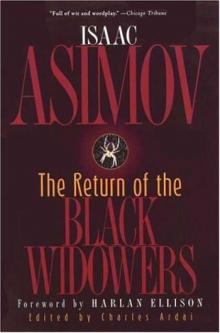 The Return of the Black Widowers
The Return of the Black Widowers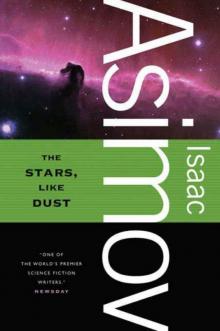 The Stars, Like Dust
The Stars, Like Dust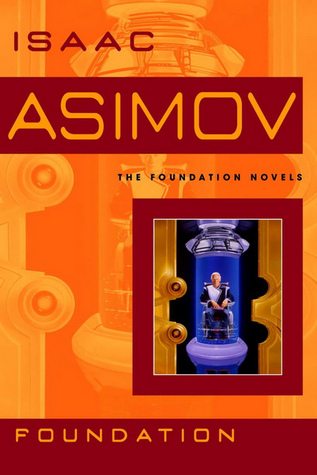 Foundation
Foundation David Starr Space Ranger
David Starr Space Ranger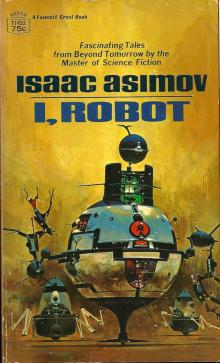 I, Robot
I, Robot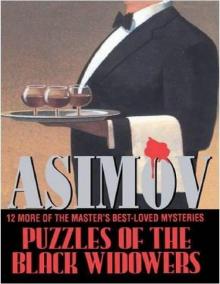 Puzzles of the Black Widowers
Puzzles of the Black Widowers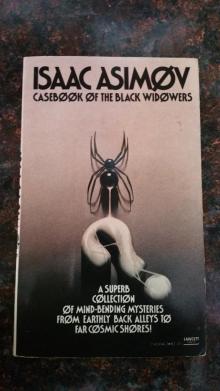 Casebook of the Black Widowers
Casebook of the Black Widowers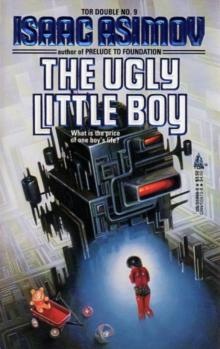 The Ugly Little Boy
The Ugly Little Boy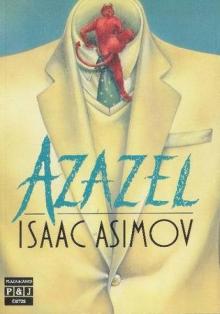 Azazel
Azazel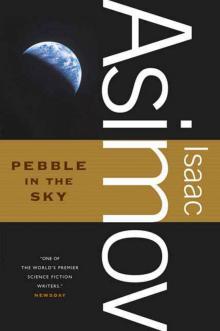 Pebble in the Sky
Pebble in the Sky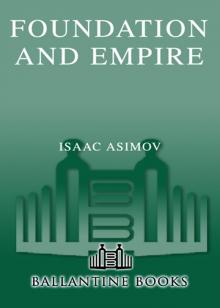 Foundation and Empire
Foundation and Empire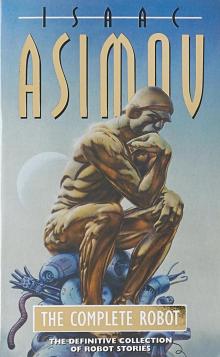 The Complete Robot
The Complete Robot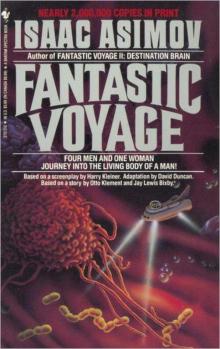 Fantastic Voyage
Fantastic Voyage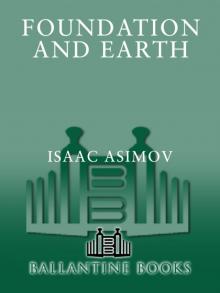 Foundation and Earth
Foundation and Earth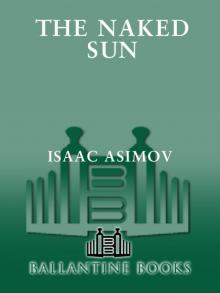 The Naked Sun
The Naked Sun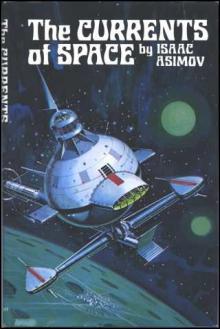 The Currents of Space
The Currents of Space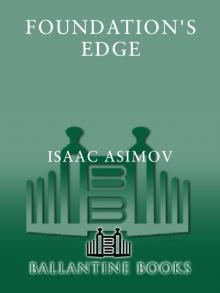 Foundation's Edge
Foundation's Edge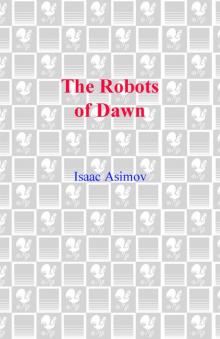 The Robots of Dawn
The Robots of Dawn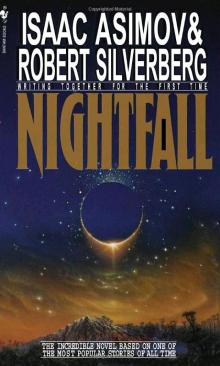 Nightfall
Nightfall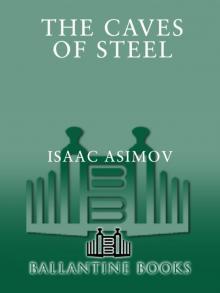 The Caves of Steel
The Caves of Steel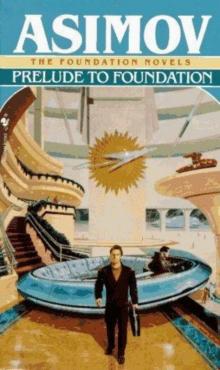 Prelude to Foundation
Prelude to Foundation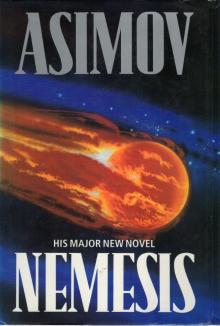 Nemesis
Nemesis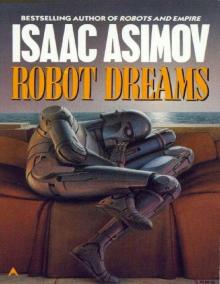 Robot Dreams
Robot Dreams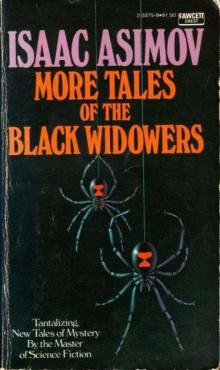 More Tales of the Black Widowers
More Tales of the Black Widowers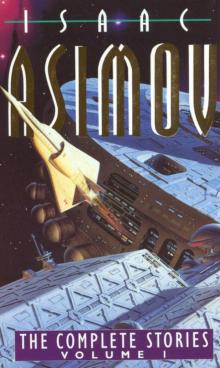 The Complete Stories
The Complete Stories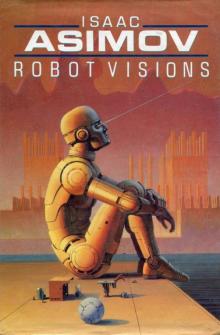 Robot Visions
Robot Visions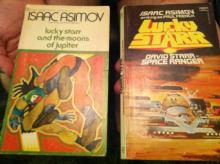 Lucky Starr And The Moons of Jupiter
Lucky Starr And The Moons of Jupiter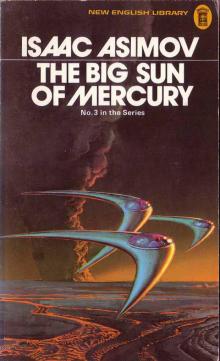 Lucky Starr and the Big Sun of Mercury
Lucky Starr and the Big Sun of Mercury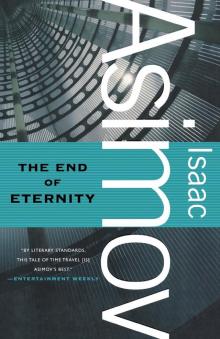 The End of Eternity
The End of Eternity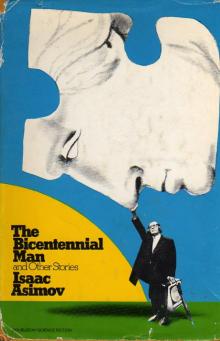 The Bicentennial Man and Other Stories
The Bicentennial Man and Other Stories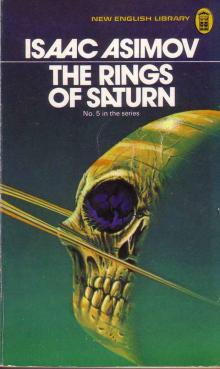 Lucky Starr And The Rings Of Saturn
Lucky Starr And The Rings Of Saturn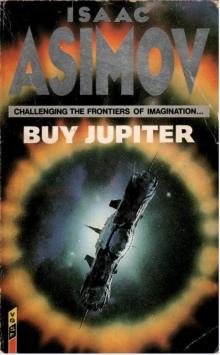 Buy Jupiter and Other Stories
Buy Jupiter and Other Stories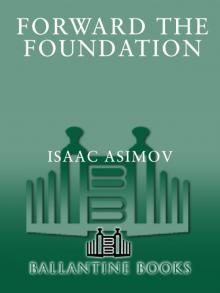 Forward the Foundation
Forward the Foundation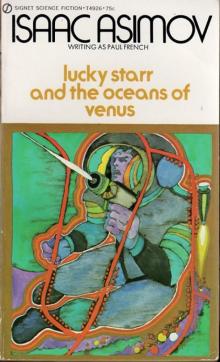 Lucky Starr and the Oceans of Venus
Lucky Starr and the Oceans of Venus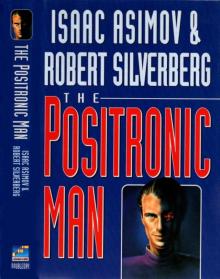 The Positronic Man
The Positronic Man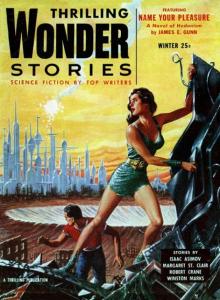 The Portable Star
The Portable Star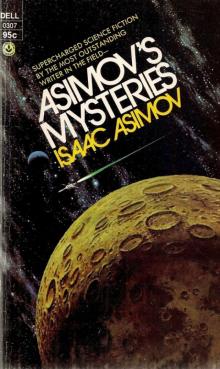 Asimovs Mysteries
Asimovs Mysteries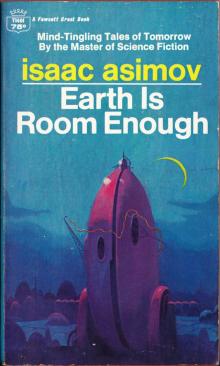 Earth Is Room Enough
Earth Is Room Enough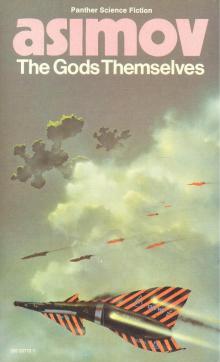 The Gods Themselves
The Gods Themselves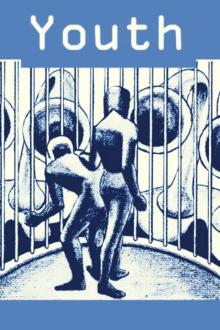 Youth
Youth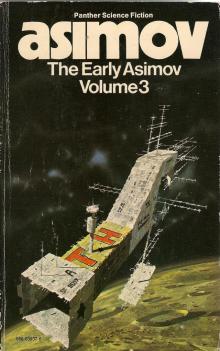 The Early Asimov Volume 3
The Early Asimov Volume 3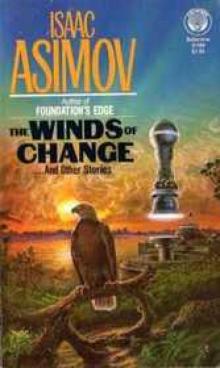 The Winds of Change and Other Stories
The Winds of Change and Other Stories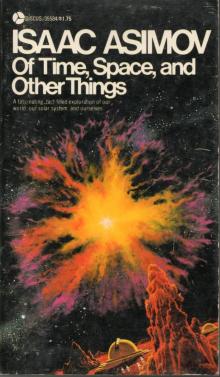 Of Time, Space, and Other Things
Of Time, Space, and Other Things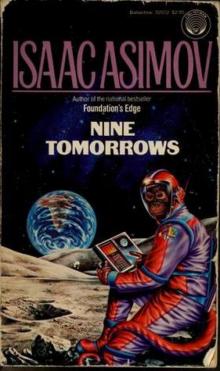 Nine Tomorrows
Nine Tomorrows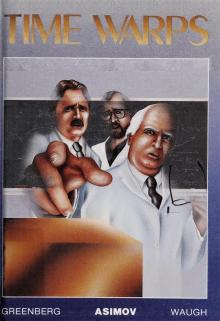 Time Warps
Time Warps Robots and Empire
Robots and Empire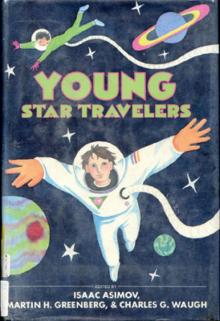 Young Star Travelers
Young Star Travelers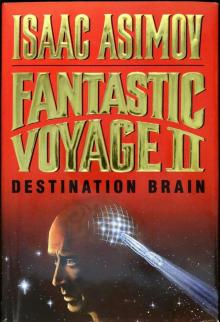 Fantastic Voyage II: Destination Brain
Fantastic Voyage II: Destination Brain Second Foundation
Second Foundation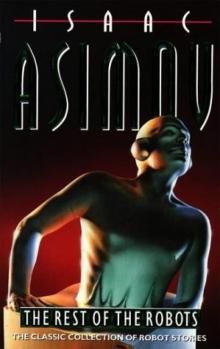 The Rest of the Robots
The Rest of the Robots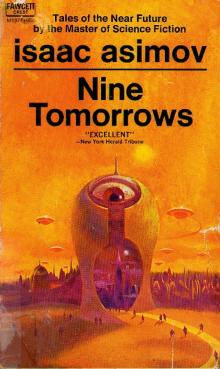 NINE TOMORROWS Tales of the Near Future
NINE TOMORROWS Tales of the Near Future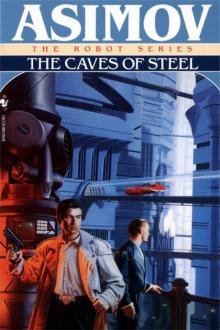 Daneel Olivaw 1 - The Caves of Steel
Daneel Olivaw 1 - The Caves of Steel THE BICENTENNIAL MAN
THE BICENTENNIAL MAN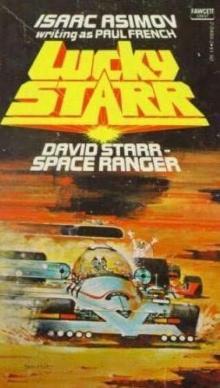 David Starr Space Ranger (lucky starr)
David Starr Space Ranger (lucky starr)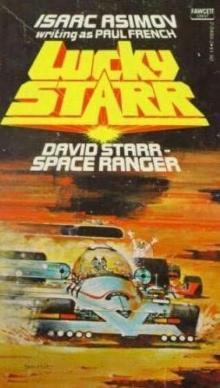 David Starr Space Ranger (ls)
David Starr Space Ranger (ls)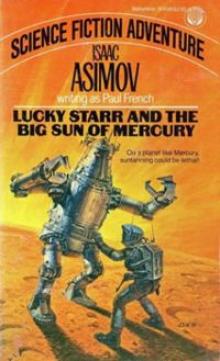 Lucky Starr And The Big Sun Of Mercury ls-4
Lucky Starr And The Big Sun Of Mercury ls-4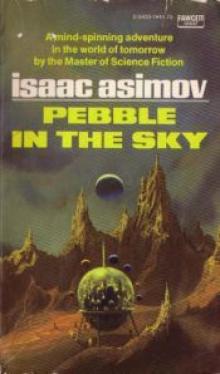 Pebble In The Sky te-1
Pebble In The Sky te-1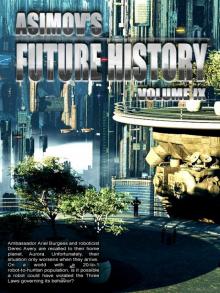 Asimov’s Future History Volume 9
Asimov’s Future History Volume 9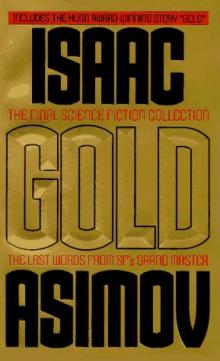 Gold: The Final Science Fiction Collection
Gold: The Final Science Fiction Collection Foundation and Earth f-7
Foundation and Earth f-7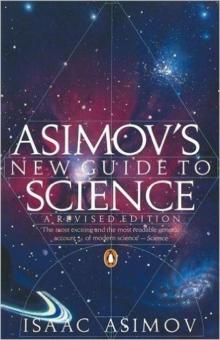 Asimov's New Guide to Science
Asimov's New Guide to Science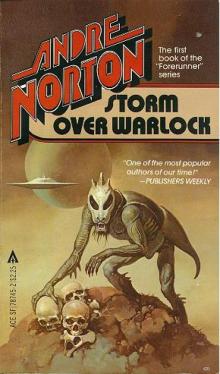 STORM OVER WARLOCK
STORM OVER WARLOCK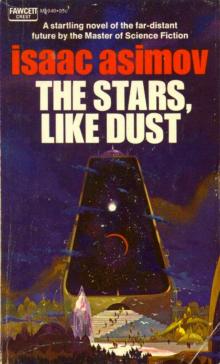 Stars, Like Dust
Stars, Like Dust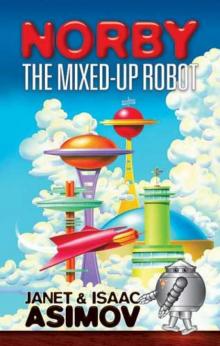 Norby The Mixed-Up Robot
Norby The Mixed-Up Robot Found!
Found!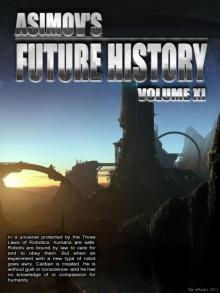 Asimov’s Future History Volume 11
Asimov’s Future History Volume 11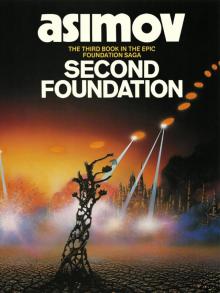 Second Foundation f-5
Second Foundation f-5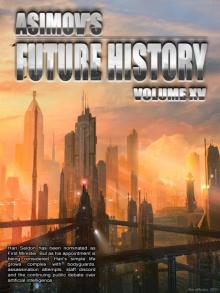 Asimov’s Future History Volume 15
Asimov’s Future History Volume 15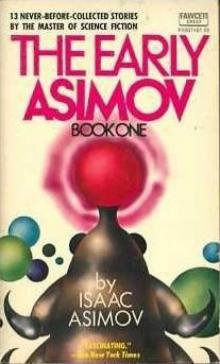 The Early Asimov. Volume 1
The Early Asimov. Volume 1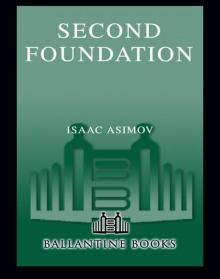 Secound Foundation
Secound Foundation Daneel Olivaw 3 - The Robots of Dawn
Daneel Olivaw 3 - The Robots of Dawn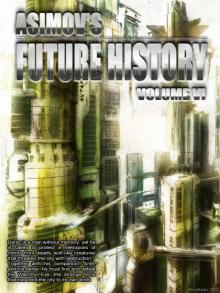 Asimov’s Future History Volume 6
Asimov’s Future History Volume 6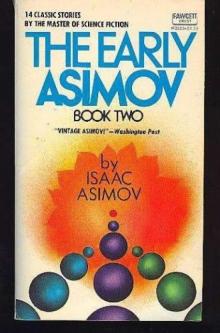 The Early Asimov. Volume 2
The Early Asimov. Volume 2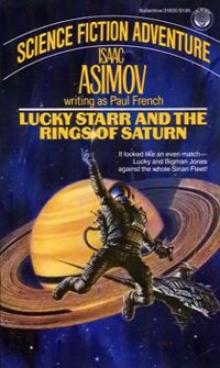 Lucky Starr And The Rings Of Saturn ls-6
Lucky Starr And The Rings Of Saturn ls-6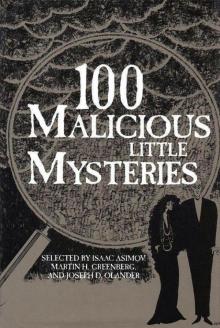 100 Malicious Little Mysteries
100 Malicious Little Mysteries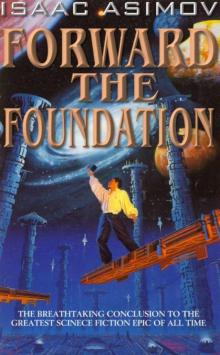 Forward the Foundation f-2
Forward the Foundation f-2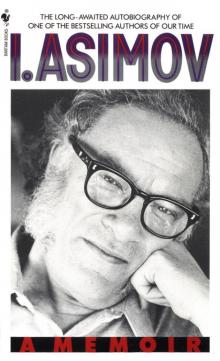 I.Asimov: A Memoir
I.Asimov: A Memoir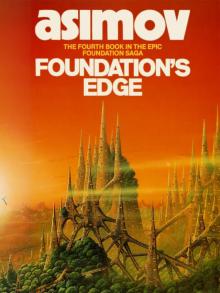 Foundation's Edge f-6
Foundation's Edge f-6 Lucky Starr and the Pirates of the Asteroids ls-2
Lucky Starr and the Pirates of the Asteroids ls-2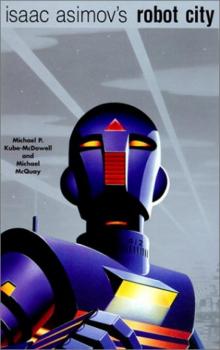 Robot City 1 & 2
Robot City 1 & 2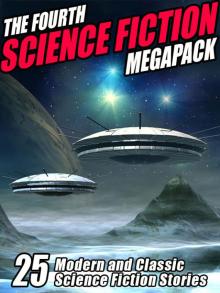 The Fourth Science Fiction Megapack
The Fourth Science Fiction Megapack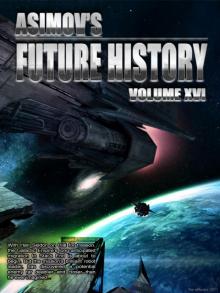 Asimov’s Future History Volume 16
Asimov’s Future History Volume 16 The Dim Rumble
The Dim Rumble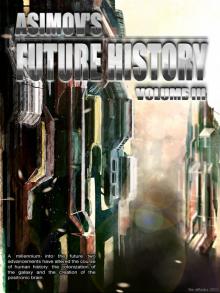 Asimov's Future History Volume 3
Asimov's Future History Volume 3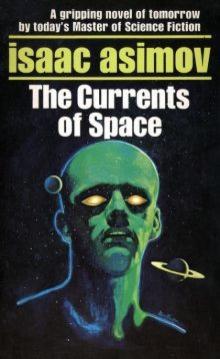 The Currents Of Space te-3
The Currents Of Space te-3 Asimov’s Guide To Shakespear. Volume 1
Asimov’s Guide To Shakespear. Volume 1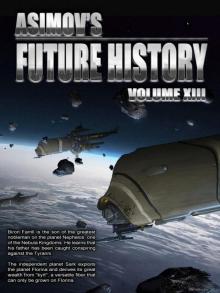 Asimov’s Future History Volume 13
Asimov’s Future History Volume 13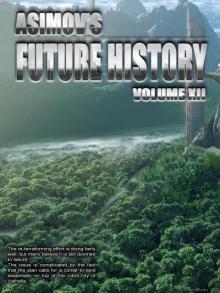 Asimov’s Future History Volume 12
Asimov’s Future History Volume 12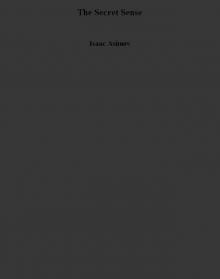 The Secret Sense
The Secret Sense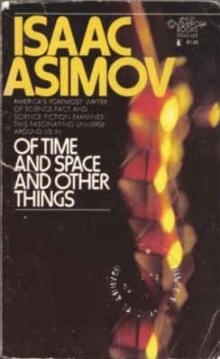 Of Time and Space and Other Things
Of Time and Space and Other Things Norby tnc-2
Norby tnc-2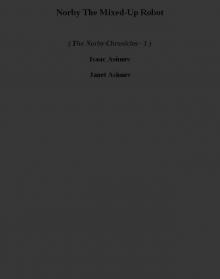 Norby The Mixed-Up Robot tnc-1
Norby The Mixed-Up Robot tnc-1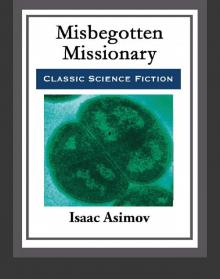 Misbegotten Missionary
Misbegotten Missionary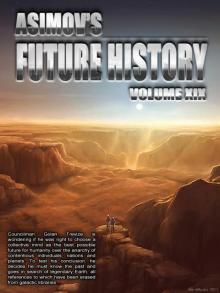 Asimov’s Future History Volume 19
Asimov’s Future History Volume 19 Fantastic Voyage II: Destination Brain fv-2
Fantastic Voyage II: Destination Brain fv-2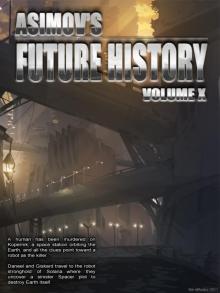 Asimov’s Future History Volume 10
Asimov’s Future History Volume 10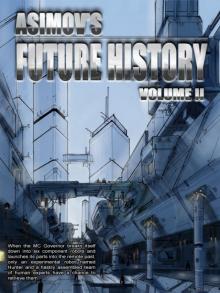 Asimov's Future History Volume 2
Asimov's Future History Volume 2 Feeling of Power
Feeling of Power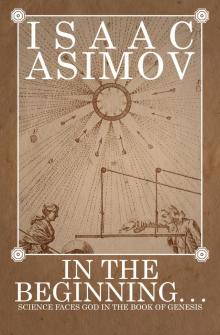 In the Beginning
In the Beginning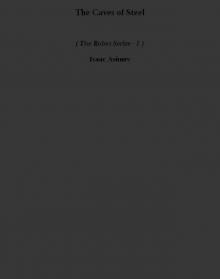 The Caves of Steel trs-1
The Caves of Steel trs-1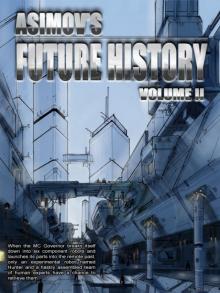 Asimov's Future History Vol 2
Asimov's Future History Vol 2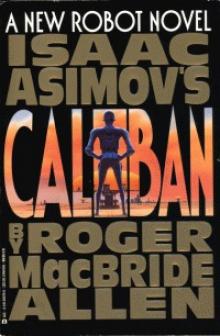 Caliban c-1
Caliban c-1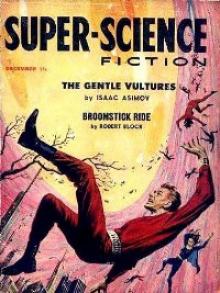 The Gentle Vultures
The Gentle Vultures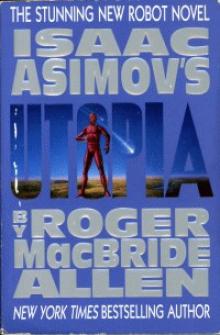 Utopia c-3
Utopia c-3 Prelude to Foundation f-1
Prelude to Foundation f-1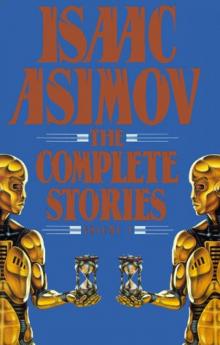 Short Stories Vol.1
Short Stories Vol.1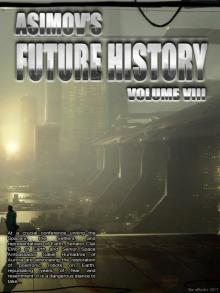 Asimov’s Future History Volume 8
Asimov’s Future History Volume 8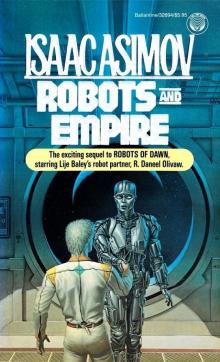 Daneel Olivaw 4 - Robots and Empire
Daneel Olivaw 4 - Robots and Empire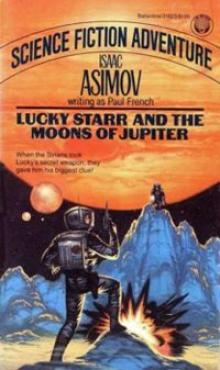 Lucky Starr The And The Moons of Jupiter ls-5
Lucky Starr The And The Moons of Jupiter ls-5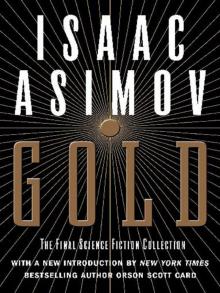 Gold
Gold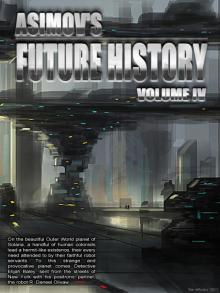 Asimov’s Future History Volume 4
Asimov’s Future History Volume 4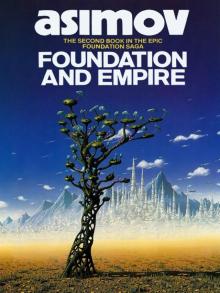 Foundation and Empire f-4
Foundation and Empire f-4 Potential
Potential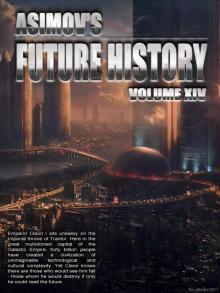 Asimov’s Future History Volume 14
Asimov’s Future History Volume 14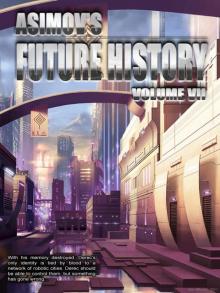 Asimov’s Future History Volume 7
Asimov’s Future History Volume 7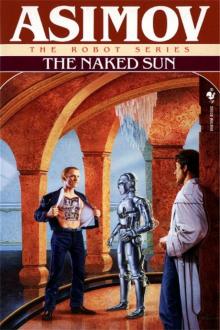 Daneel Olivaw 2 - The Naked Sun
Daneel Olivaw 2 - The Naked Sun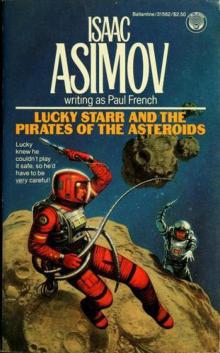 Lucky Starr and the Pirates of the Asteroids
Lucky Starr and the Pirates of the Asteroids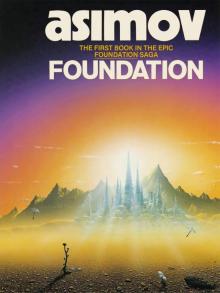 Foundation f-3
Foundation f-3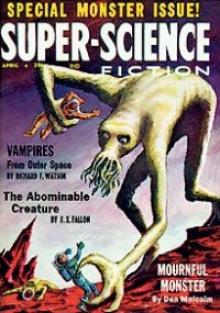 All the Troubles of the World
All the Troubles of the World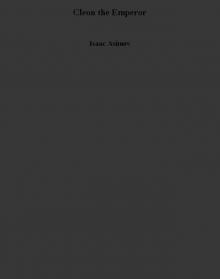 Cleon the Emperor
Cleon the Emperor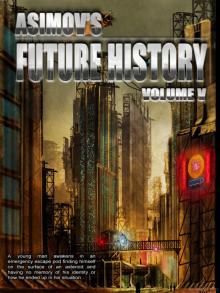 Asimov's Future History Volume 5
Asimov's Future History Volume 5 Asimov’s Future History Volume 20
Asimov’s Future History Volume 20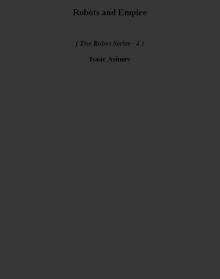 Robots and Empire trs-4
Robots and Empire trs-4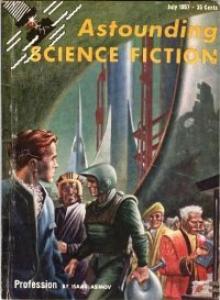 Profession
Profession It's Been a Good Life
It's Been a Good Life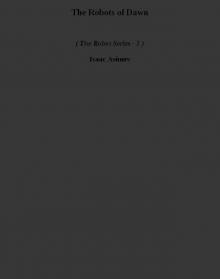 The Robots of Dawn trs-3
The Robots of Dawn trs-3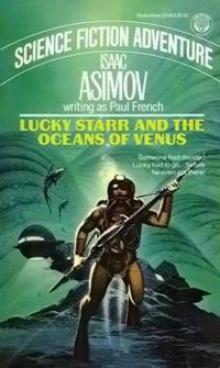 Lucky Starr And The Oceanf Of Venus ls-3
Lucky Starr And The Oceanf Of Venus ls-3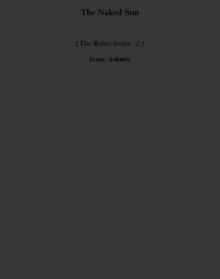 The Naked Sun trs-2
The Naked Sun trs-2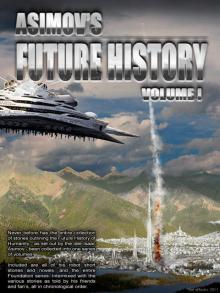 Asimov's Future History Volume 1
Asimov's Future History Volume 1